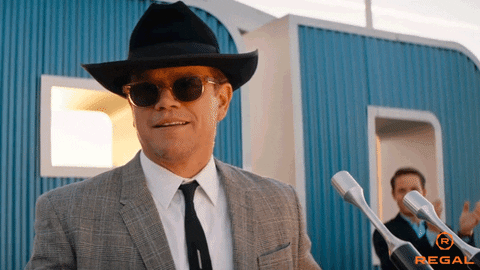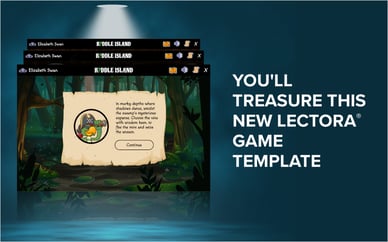If you’ve seen the newest addition to my list of favorite movies, Ford v Ferrari, you’ve been treated to one of the most exciting stories in car racing history.
It’s a story that I fell in love with while watching The Grand Tour on Amazon Prime back in 2016 when James May did a 20 minute documentary on the story. It’s a story driven by passion, pride, stubbornness, friendship, and some elbow-grease brute-force American engineering.
I’m a firm believer that every film—every story—has a lesson to be learned, and Ford v Ferrari was no different.
But what made this film’s lessons so special is how easily they apply to creating quality training.
***Warning—the following does contain spoilers. However, these spoilers have been around since 1966.***
Lesson number Uno: If you see a great product—BUY IT.
Enzo Ferrari (played by Remo Girone) handcrafted some of the greatest cars the world had ever—and has ever—seen. His company was on top of the world until they found themselves in some financial trouble and entertained a bid for $16 million from Ford for the Ferrari brand. But when Enzo found that he could not maintain control over the Ferrari racing team, he turned away Ford’s offer.
When you’re building your training program you may feel overwhelmed if you’re starting from scratch. Ford probably felt overwhelmed when they realized that the sleek, sexy-looking and high-performing vehicles produced by Ferrari were drawing interest from a young crowd. Especially since that young crowd wasn’t buying Ford cars.
Which is why Ford tried to buy Ferrari.
Your learners are also growing increasingly younger. Finding ways to create new and exciting training that will really capture their attention is a great thing to do. Even if you need to purchase some resources to make that happen—do it.
eLearning Brothers has an enormous library of engaging, ready-to-go off-the-shelf training courses that you can use to quickly grow your training library.
Lesson number Due: If you want something great but aren’t capable of producing it yourself, hire someone who is capable.
“We will bury Ferrari at Le Mans.”
This is a bold statement coming from Henry Ford II (played by Tracy Letts), considering his company at the time mass-produced cars for the common man, and was only involved in shorter racing like NASCAR.
Faced with those facts Ford decided to outsource to people who could win Le Mans.
Enter Carroll Shelby (played by Matt Damon), a man who was not just a slick car designer, but had actually raced and WON the Le Mans race in 1959. He was someone with experience in car construction, car racing, and winning races.

Matt Damon as Carroll Shelby
It took a lot of trust from the people at Ford to allow Carroll Shelby to hire the team that he wanted, despite their questions and misgivings. Carrol Shelby brought on Ken Miles (played by Christian Bale), a British driver who was also a great mechanical engineer and a key member of Shelby’s previous race team.
Ultimately these decisions, Ford hiring Shelby and then finally giving him full reign of the project, led to Ford’s victory over Ferrari in 1966.
Similarly, you may find that your training needs exceed your current capabilities and that you need to reach out for help from capable hands. eLearning Brothers has an award-winning Custom Solutions team that has experience in course design, course management, and creating top tier training.
While it can be difficult to put your hard work and vital information in the hands of an outside eLearning vendor, you’ll find that—just like Henry Ford II—a little faith can lead to success.
Lesson number Tre: It really isn’t a bad thing to be capable of producing high quantities.
Whether it really happened this way or it was added for drama’s sake, Enzo Ferrari telling Henry Ford II that he makes “ugly little cars in ugly factories” is an insult that, to me, seems very light.
Sure if you compare a 1960 Ferrari to a 1960 Ford, well, Ferrari both looks better and outperforms the stock Ford cars, but the truth is that they were selling to different markets with different objectives.
Another argument in Ford’s favor is that they couldn’t have afforded to attempt to buy Ferrari or spend the money it cost to build a Le Mans racing team and car if their founder Henry Ford hadn’t created the amazing production beast that was his factories.
The takeaway here is that if you’re a developer and you’re doing just great plugging away in your “factory” remember that efficiency can lead to great things.
In the film, Henry Ford II goes to the production floor and demands new ideas to streamline their process, to make their cars better, and to make the business better as a whole.
If you too could use some new ideas and inspiration, look no further! eLearning Brothers has an enormous library of templates and assets filled with icons, cutout characters, stock audio, stock video, stock images, and more. You can use these to enhance your process, cut down on development time, and become a rockstar such that the world has never seen!
Lesson number Quattro: You can’t build a car by committee.
In the film, Carroll Shelby is called into Henry Ford II’s office after failure at the 1964 Le Mans and asked to explain his failure.
Shelby explains that he watched a little red envelope pass through five people’s hands before it landed in Mr. Ford’s inbox and while that sort of system may work for a factory or an office, but it does not work for building a top tier race car.
One could argue that having a committee is helpful in many situations, but as our Senior & Lead Project Manager Laura Doerr explained in a webinar, having a single main point of contact when building content is extremely important in ensuring that your development actually moves forward and does not get caught in the eternal loop of edit, review, and repeat.
You can prepare to tackle this and other common project management challenges by following our 7 Top Strategies to Avoid a Change of Scope.
Lesson number Cinque: Don’t let a broken door get in your way.
Ken Miles finally found himself in the driver’s seat at Le Mans in 1966. After three years of sweat, blood, and tears he would start the race that would become a crowning jewel to both Ford and his racing career.

Christian Bale as Ken Miles
Yet once he ran to his car, started it up and began to drive away, he found the door wouldn’t close.
This was not something that was added for dramatic effect, this really happened. Ken took off driving his first lap and what a terrible lap! Holding the door shut as it weighed more and more around each turn and being unable to shift, he pulled into the pit for a quick repair.
The film shows several members of the Ford racing team rushing out to the car and trying to find all the small ways the door mechanisms could have gone wrong. As they’re poking and prodding over the yelling of Ken and others, Phil Remington (played by Ray McKinnon) rushes forward with a mallet. He smashes the door, forcing it to shut, and off speeds the GT 40.
Now I’m not saying that all of our training development problems should be solved in this way (in fact, let’s never use a mallet in training, yeah?), but we may find ourselves focusing far too deeply on the problems rather than finding solutions that work, no matter how simple and low-budget they may seem.
Did you learn any other lessons while watching Ford v Ferrari?
What are your thoughts on the lessons I’ve outlined here? Did you enjoy the film?
Let me know in the comments, and of course, don’t forget to take a look around our site and see how you can become a rockstar with eLearning Brothers.








